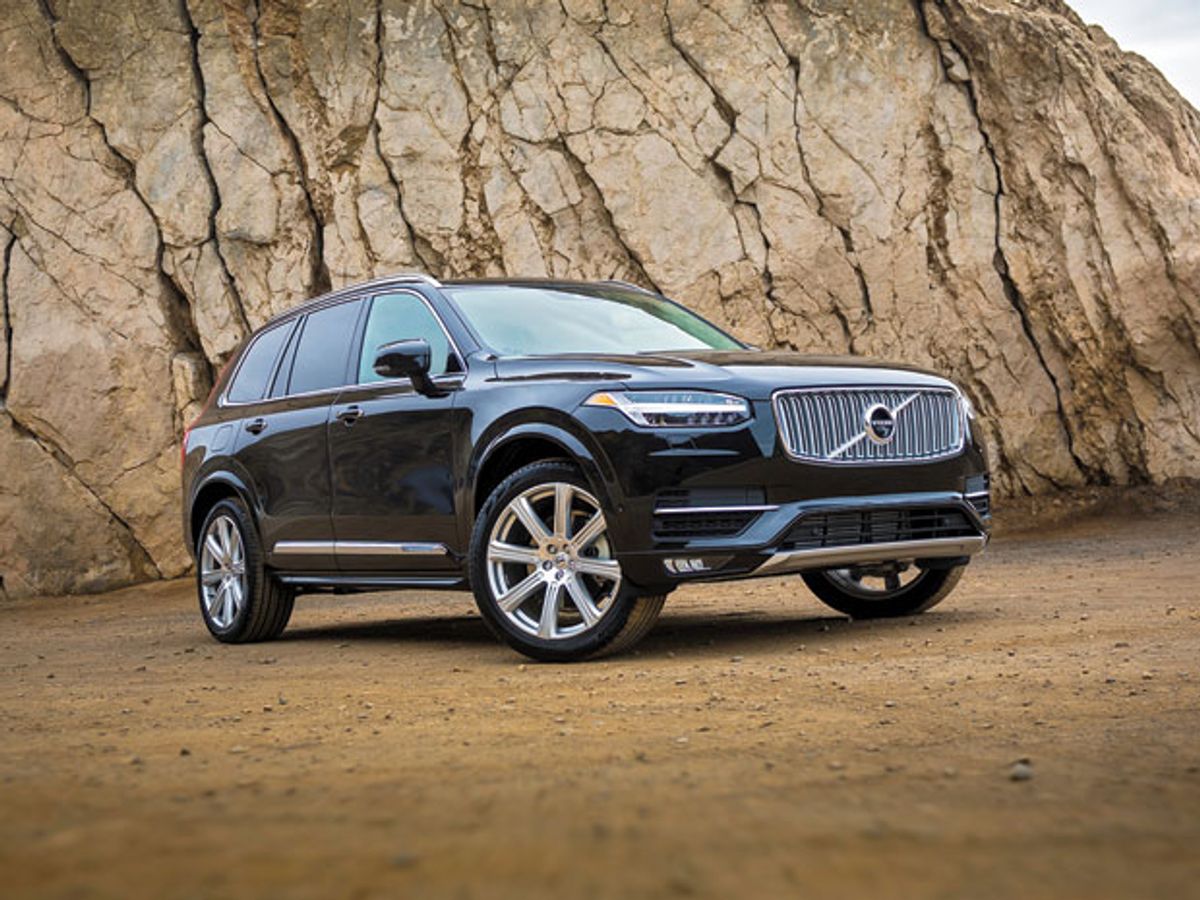2016's Top Ten Tech Cars: Volvo XC90
Safety still comes first

Video: Volvo
Sweden’s Volvo had been in virtual hibernation in recent years, cut loose from Ford, sold to a Chinese owner, and resting on past innovations. That changes with the new XC90, a luxury SUV that’s hogging such awards as North American Truck of the Year and reaffirming Volvo’s reputation for safety.
The XC90 wraps three rows and seven passengers in a Scandinavian body that looks as solid as a glacier. It’s the kind of SUV that you might expect to have a V-8, such as the one in the old XC90. But the new one cuts the cylinder count in half: the Volvo Twin Engine combines a turbocharger and a supercharger in a 2.0-liter four to make a very respectable 236 kilowatts (316 horsepower)—and a downright burly 298 kW in the T8 plug-in hybrid version, thanks to a 65-kW electric-motor assist. That T8 hustles to 100 kilometers per hour (62 miles per hour) in just 5.6 seconds, and its E-mode lets it cover up to 40 km on electricity alone.
Price: US $69,095 with tax credit up to $4,600 (T8 plug-in version)
Power plant: 2.0-L four-cylinder with supercharger, turbocharger, and dual electric motors; total 298 kW (400 hp)
Overall fuel economy: 9.8 L/100 km (24 mpg)
Volvo’s painfully antiquated infotainment systems are replaced by a Tesla-like vertical touch screen that responds to swipes, pinches, and other smartphone-style functions. And the XC90 antes up with two world’s firsts in self-driving safety: In addition to staying in its lane, as some other cars do, the Volvo takes evasive steering and braking action if it senses an imminent departure from the road.
And if the Volvo leaves the road anyway, the system electrically cinches front seat belts to secure occupants as much as possible. Energy-absorbing seat material deforms to mitigate spinal injuries from vertical impacts, such as from going airborne and then bottoming out in a ditch. The XC90 also tries to avoid collisions by hitting the brakes if the driver should turn into an oncoming vehicle’s path with too little speed or room to make it.
At speeds below 50 km/h, the Pilot Assist function links the camera and steering to keep the XC90 centered in its lane, actively moving the steering wheel to do the job. It’s yet another vehicle poised on the brink of autonomous driving, and its priorities are clear: Safety first. n